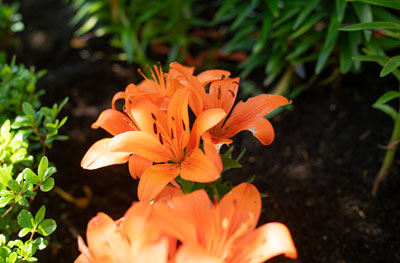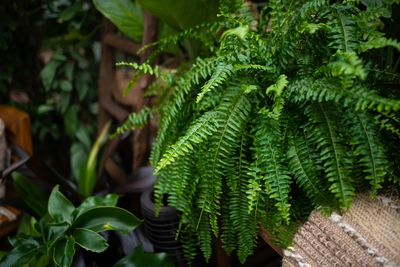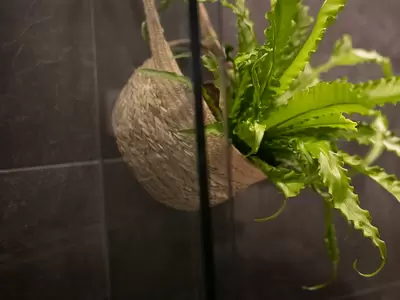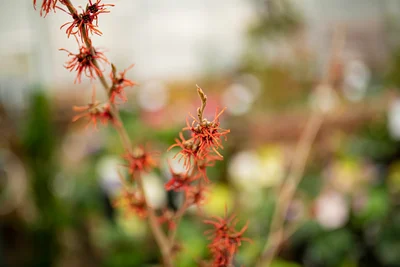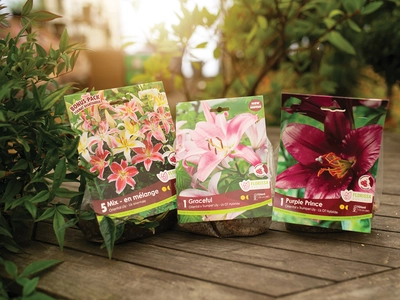
Written by Ingrid Hoff
Lilies are the garden version of a show-off, they practically scream “look at me” in the summer garden. Even ones in subdued colours attract attention, they are a botanical exclamation point in the garden.
A Classic Collectible
Lilies can turn even a mild-mannered gardener into a passionate collector. But don’t be fooled into believing that every plant called a lily actually is one. There are a ton of plants out there with the name lily that aren’t actually lilies (water lilies, calla lilies, lily of the valley, canna lilies, daylilies).
Real lilies, often called true lilies, are perennial plants that grow from a scaly-looking bulb. Despite their exotic looks, they are so easy to grow.
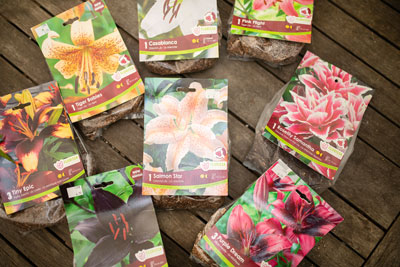
Growing Lilies
Lilies will grow in sun to part shade, they should be planted in a moist (most do not tolerate drying out), well-drained, rich organic soil. They will thrive in containers and in the garden, but you should always make sure to know before you grow.
Lilies come in a variety of types and sizes. A dwarfing variety is perfect for a container on the patio but would be lost at the back of the garden; as one of the tall stately types would be perfect backdrop in the garden space would be completely inappropriate for containizering.
Lilies are grouped into several different horticultural classifications called Divisions. Here is a quick list of some of the more common types of lilies you’ll find:
- Species – these are lilies that you would find growing out in nature. Found around the world from North America, to Europe, and Asia; and in all kinds of environments, from humid jungles to desolate mountains and everywhere in between. These are the lilies in their purist simplest form and a great example is the beloved tiger lily.
From the species lilies have come a plethora of hybrids in all different colours, shapes and sizes. Below are some of the most popular types of hybrid lilies.
- Asiatic – the best lily for beginners, and probably the most popular. Asiatic lilies are what most people picture when you say lily. They bloom from early to mid-summer and come in a range of colours from fiery reds to demure pastels and everything in between. Flowers can last up to one month and are mostly unscented.
- Martagon – are another early blooming lily but they have a distinctly different look. The flowers are a candelabra of pendulous, reflexed petal “Turk’s cap” fragrant flowers. They are striking and unique. Of all the lilies these are the ones with the reputation for being slightly harder to grow, but once they get established, they will thrive for years (so don’t move them). They need good drainage and of all the lilies are the most shade tolerant. Also, one of the few lilies that can benefit from being planted in the fall instead of the spring.
- Trumpet – are called Easter lilies by some because they have the same flower shape as the potted indoor lilies you buy in the spring, but in the garden, they bloom in mid-summer. The flowers are extremely fragrant, large (15-25cm or 6-10”), waxy, and trumpet-shaped. These lilies never fail to put on a show as the flowers are borne in masses of 12-15 blooms per stem that can be as tall as 180cm (6’).
- Oriental – these are the queen of the over-the-top “look at me” lilies. With enormous exotic looking flowers that boast an intense fragrance, especially at dusk. They are the last to bloom in late summer in shades that range from pure white to hot pink. They can be a bit tricker to grow so make sure they have lots of water (mulch well), and a soil that leans more towards the acidic pH range.
This list is only the tip of the iceberg when it comes to lilies, there are so many others out there. So, if you’re feeling adventurous head on down to your nearest GARDENWORKS and pursue the racks of bagged lily bulbs. It won’t take you long to find one with a glossy photo of a lily that makes you stop and think “yes! That one!”
Tips and Tricks
Select a nice firm, plump bulb and take it home to plant immediately. Unlike spring bulbs lily bulbs are not truly dormant so they need to be planted as soon as possible.
To plant, simply dig a hole according to the directions on the package (three times the size of the bulb is a good guideline).
Add some bulb fertilizer or bone meal to the bottom of the planting hole, mix it up with your hands, place the bulb in pointy side up, fill the soil back in, and water well. A good design tip if you have the space is to plant a single lily type in groups of three to five.
Then, sit back and wait for the over-the-top show to begin.

